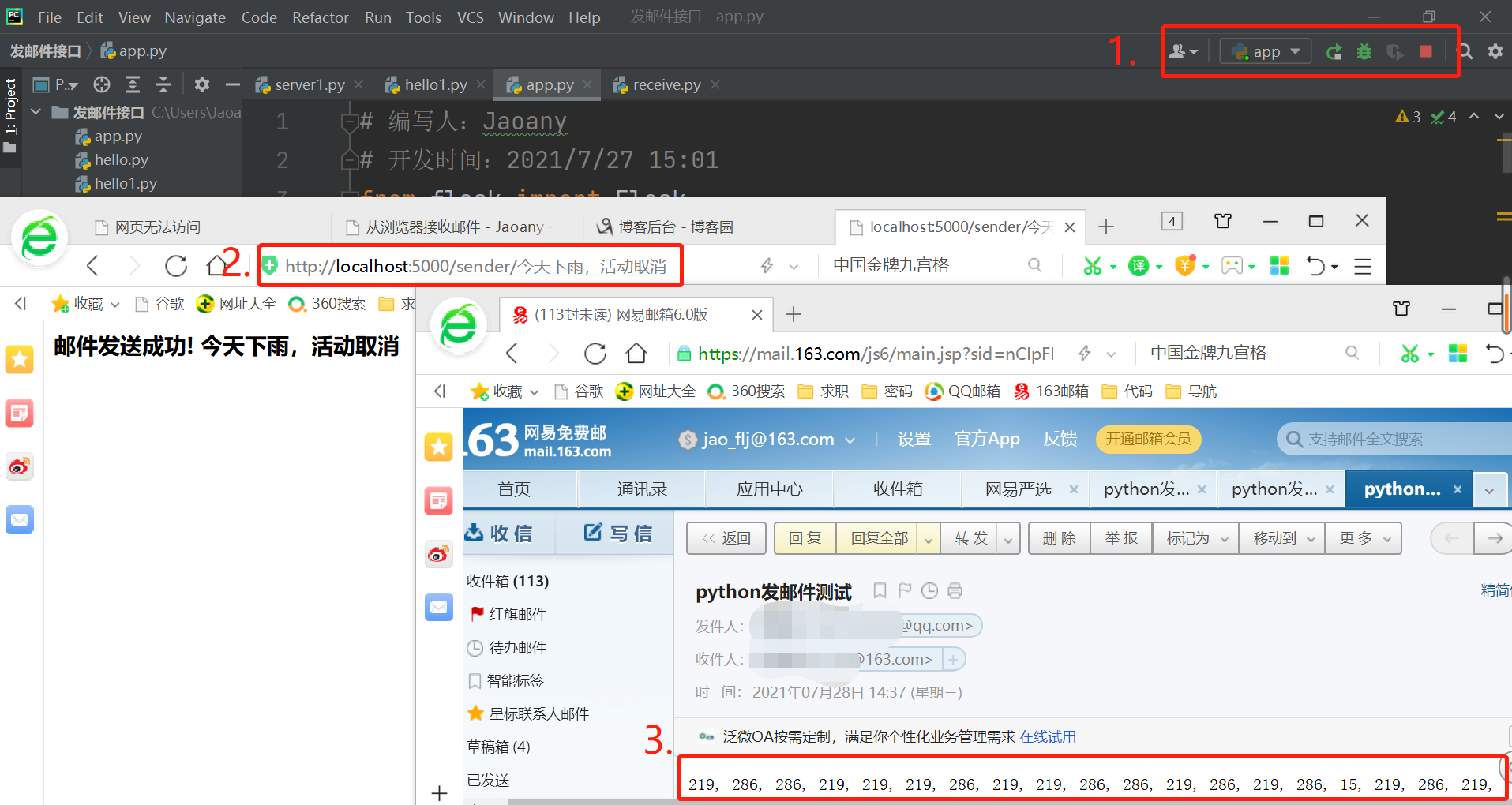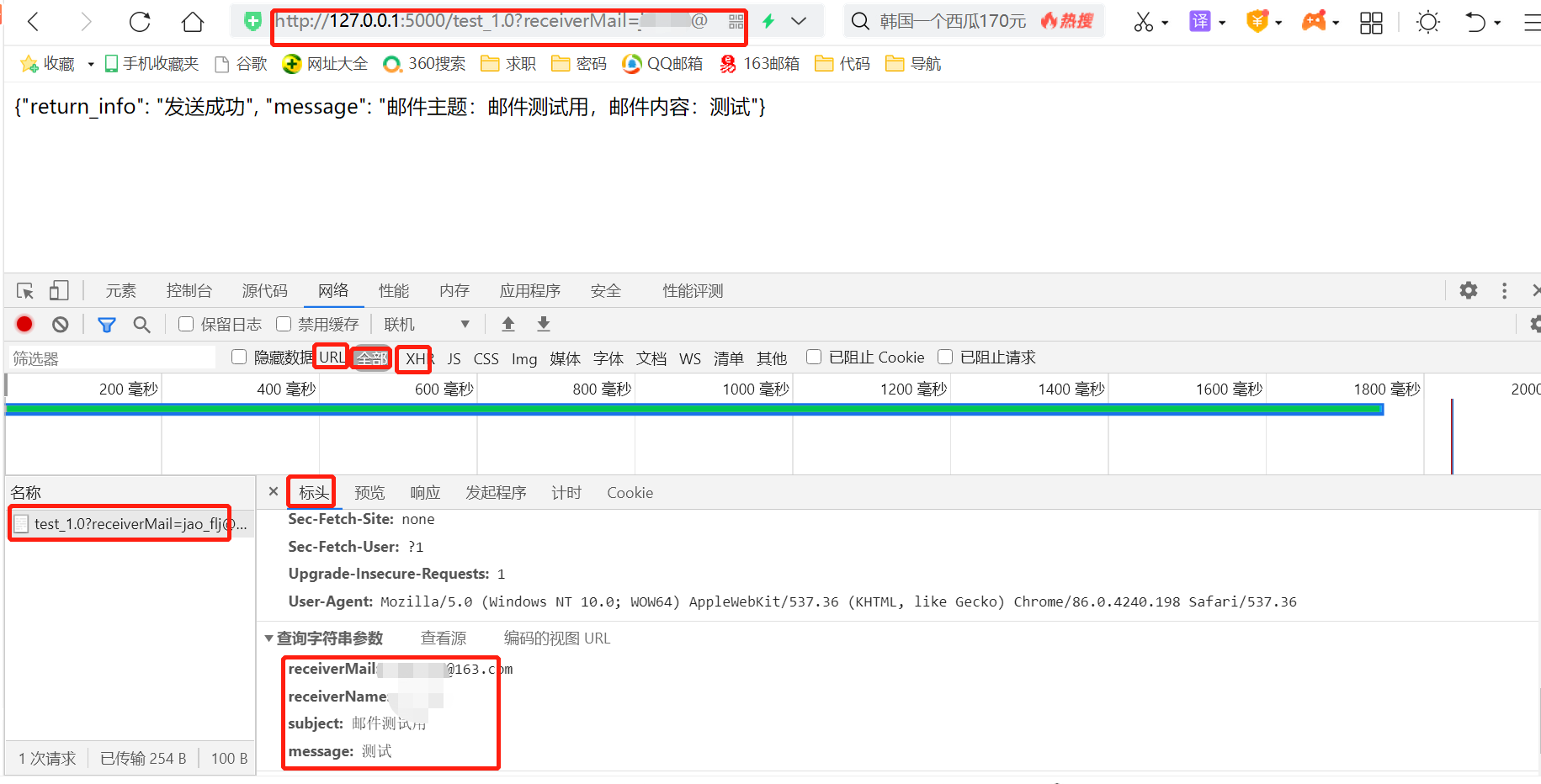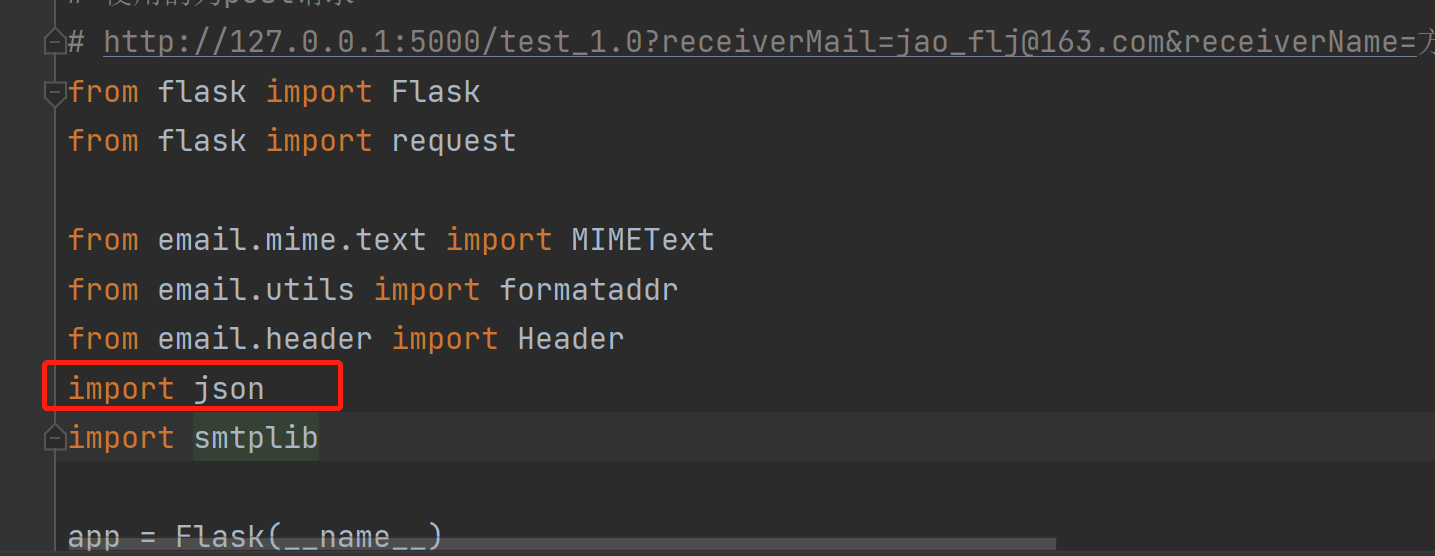实现的功能如下
1.运行自己写的python程序(.py),将此程序作为服务器监听
2.从浏览器输入相应的ip,端口,这里还实现了输入相应的参数,可以传递参数并运行.py程序
3.运行程序后,实现电子邮件加密后发送

服务器端:
# 编写人:Jaoany
# 开发时间:2021/7/27 15:01
from flask import Flask
from flask import request
# 发送邮件,使用RSA密码算法加密,需要接收方使用自己的私钥对密文解密
# 导入第三方模块
import smtplib
from email.mime.text import MIMEText
from email.utils import formataddr
print("Content-type:text/html")
# 在这里可以自己写函数
app = Flask(__name__)
@app.route('/', methods=['GET', 'POST'])
def home():
return '<h1>Home</h1>'
#如果想动态传参数,
# 在本地浏览器输入(在另外一台电脑浏览器的还没测试)
http://127.0.0.1:5000/sender/邮件内容
或localhost:5000/sender/邮件内容
#在"/sender"后面添加"/<plaintext1>",然后你就可以引用了
@app.route("/sender/<plaintext1>", methods=['GET'])
def sender(plaintext1):
p, q, e = make_p_q_e()
# 获取数据
# plaintext1 = input("待发送加密数据:")
# plaintext1 = '1234567'
# 将输入的数据转换成01字符串
plaintext = ' '.join(format(ord(x), 'b') for x in plaintext1)
# 公钥、私钥
public_key, private_key = make_key(p, q, e)
# 加密
ciphertext1 = encryption(public_key, plaintext)
print("加密后的数据:", ciphertext1)
# 将数组转换成字符串
ciphertext = ', '.join(str(i) for i in ciphertext1)
# 输出加密后的字符串数据
print(ciphertext)
# 调用函数(登录密码需要换成你自己的)
mail('发件人邮箱@qq.com', '发件人邮箱SMTP验证码', '收件人邮箱.com', '发件人昵称', '收件人昵称', ciphertext)
return '<h3>邮件发送成功! {}</h3>'.format(plaintext1)
if __name__ == '__main__':
app.run()
更新:后来带我的领导说我写的好像参数没有传递,让我改一下,能够在浏览器查看参数路径的那种,如下,

修改代码中主要是用了一个函数来接收参数:

具体route中的代码如下:
# 记住头部要添加:端口

# 只接受get方法访问
@app.route("/test_1.0", methods=["GET"])
def check():
p, q, e = make_p_q_e()
# 获取数据
# plaintext1 = input("待发送加密数据:")
# plaintext1 = '1234567'
# 获取传入的params参数
get_data = request.args.to_dict()
to_user = get_data.get('receiverMail')
to_nick = get_data.get('receiverName')
subject = get_data.get('subject')
plaintext1 = get_data.get('message')
# 将输入的数据转换成01字符串
plaintext = ' '.join(format(ord(x), 'b') for x in plaintext1)
# 公钥、私钥
public_key, private_key = make_key(p, q, e)
# 加密
ciphertext1 = encryption(public_key, plaintext)
print("加密后的数据:", ciphertext1)
# 将数组转换成字符串
ciphertext = ', '.join(str(i) for i in ciphertext1)
# 输出加密后的字符串数据
print(ciphertext)
return_dict = {'return_info': '发送成功', 'message': False}
# 判断入参是否为空
if request.args is None:
return_dict['return_code'] = '5004'
return_dict['return_info'] = '请求参数为空'
return json.dumps(return_dict, ensure_ascii=False)
# 调用函数(登录密码需要换成你自己的)
mail('3025620084@qq.com', 'usymoatskbjlddcf', to_user, '草璧月', to_nick, subject, ciphertext)
# 对参数进行操作
return_dict['message'] = tt(subject, plaintext1)
return json.dumps(return_dict, ensure_ascii=False)
# 功能函数
def tt(subject, plaintext1):
result_str = "邮件主题:%s,邮件内容:%s" % (subject, plaintext1)
return result_str
if __name__ == "__main__":
app.run(debug=True)